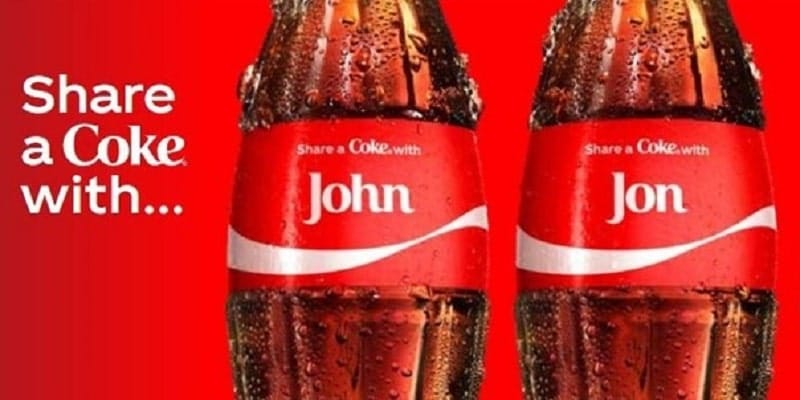In the world of public relations, one of the most effective tools at your disposal is storytelling. When done correctly, a well-crafted narrative can capture the attention of your audience, generate interest in your brand, and even change minds. As a Public Relations specialist with years of experience under my belt, I’ve seen first-hand the power of storytelling in action. Whether you’re trying to promote a new product or service, build brand awareness, or connect with your target audience on a deeper level, storytelling can help you achieve your goals.
In this article, I’ll be sharing some of my top tips for using storytelling in your public relations strategy, including how to craft a compelling narrative, choose the right platforms for your message, and measure your success. So, whether you’re a seasoned PR pro or just getting started in the industry, read on to discover the power of storytelling in public relations.
Understanding the Importance of Storytelling for a public relations specialist
Storytelling has been a powerful tool for communication since the beginning of time. From ancient myths and legends to modern-day advertising campaigns, stories have the ability to capture our attention and engage us in a way that facts and figures cannot. In the world of PR, storytelling can be a powerful tool for building relationships with your audience, generating interest in your brand, and shaping public perception.
At the heart of every good PR story is a narrative that connects with the audience on an emotional level. Whether you’re promoting a new product or service, highlighting a charitable initiative, or sharing the story of how your company got started, the goal is to create a story that resonates with your audience and inspires them to take action.
Elements of a Good PR Story that every public relations specialist should know
So, what makes a good PR story? At its core, a good PR story is one that is authentic, engaging, and relevant to the audience. Here are some key elements to keep in mind when crafting your PR story:
- Authenticity: Your story should be genuine and true to your brand’s values and mission. Authenticity is key to building trust with your audience and establishing credibility.
- Emotional appeal: Your story should connect with your audience on an emotional level. Whether it’s through humor, inspiration, or empathy, your story should evoke an emotional response from your audience.
- Relevance: Your story should be relevant to your audience’s interests and concerns. It should address a pain point or challenge that your audience is facing and offer a solution or insight that they can use.
- Clear message: Your story should have a clear message or takeaway that your audience can remember and act on. Whether it’s a call to action or a memorable tagline, your story should leave a lasting impression on your audience.
Examples of Successful PR Campaigns through Storytelling
One of the best ways to understand the power of storytelling in PR is to look at some successful campaigns that have used this strategy effectively. Here are a few examples:
Dove’s Real Beauty Campaign

Real Beauty campaign by Dove is a classic example of how storytelling can be used to build a brand and connect with an audience. The campaign featured real women of all shapes, sizes, and ages, and designed to challenge traditional beauty ideals. By telling the stories of these women and highlighting their unique qualities, Dove was able to create a powerful emotional connection with its audience and establish itself as a brand that celebrates real beauty.
Always’ Like a Girl Campaign

Always’ Like a Girl campaign is another great example of how storytelling can be used to promote a message and drive social change. The campaign featured young girls and asked them to perform tasks “like a girl.” The results were eye-opening and showed how the phrase “like a girl” has become synonymous with weakness and inferiority. By telling this story and encouraging girls to reclaim the phrase “like a girl,” Always was able to create a powerful message that resonated with its audience and went viral on social media.
Coca-Cola’s Share a Coke Campaign

Share a Coke campaign provides an outstanding example of storytelling’s ability to engage and reward an audience. Custom-made Coke bottles with people’s names were distributed during this promotion; and inspiring people to share a Coke bottle with a certain person and post their experiences online fostered a sense of community around its brand.
Tips for Crafting a Compelling PR Story
Now that you understand the importance of storytelling in PR and have seen some successful campaigns in action, let’s dive into some tips for crafting a compelling PR story that every public relations specialist should know:
- Know your audience: Before you start crafting your story, it’s important to understand who your audience is and what they care about. What are their pain points and challenges? What motivates them? By understanding your audience, you can tailor your story to resonate with them and capture their attention.
- Focus on the human element: At the heart of every good story is a human element that connects with the audience on an emotional level. Whether it’s a personal story, a testimonial from a customer, or a behind-the-scenes look at your company, the human element is what makes your story relatable and engaging.
- Use visuals: Visuals are a powerful tool for storytelling. Whether it’s a video, a photo, or an infographic, visuals can help bring your story to life and make it more memorable for your audience.
- Choose the right platform: Different platforms are better suited for different types of stories. For example, a longer-form story might be better suited for a blog post or an article, while a shorter, more visual story might be better suited for social media. Choose the platform that best fits your story and your audience.
Leveraging Social Media for Storytelling in PR
Social media is an incredibly powerful tool for storytelling in PR. With billions of users around the world, social media platforms like Facebook, Twitter, and Instagram offer a unique opportunity to reach a large audience and connect with them on a more personal level. Here are some tips that every public relations specialist should use for leveraging social media for storytelling in PR:
- Know your platform: Different social media platforms have different strengths and weaknesses when it comes to storytelling. For example, Instagram is a visual platform that is great for showcasing products and lifestyle content, while Twitter is better suited for short-form, timely content. Know your platform and tailor your story accordingly.
- Use hashtags: Hashtags are a great way to increase the visibility of your story on social media. Choose a relevant hashtag that relates to your story and use it consistently across all your social media channels.
- Engage with your audience: Social media is a two-way conversation. Don’t just post your story and walk away. Engage with your audience by responding to comments, asking questions, and soliciting feedback.
Measuring the Success of Your Storytelling PR Campaign
Finally, it’s important to measure the success of your storytelling PR campaign. Here are some key metrics to keep in mind:
- Engagement: How many people engaged with your story? This can include likes, comments, shares, and retweets.
- Reach: How many people saw your story? This can include impressions, views, and followers.
- Conversions: Did your story lead to any conversions, such as website visits or sales?
By tracking these metrics and analyzing the data, you can determine the success of your storytelling PR campaign and make adjustments as needed.
The Future of Storytelling in PR
As technology continues to evolve, the future of storytelling in PR is bright. From virtual reality experiences to interactive content, there are countless ways to tell stories in the digital age. However, at the heart of every good story is a human element that resonates with the audience. As long as we remember this, storytelling will continue to be a powerful tool for public relations.
Resources for Improving Your Storytelling Skills as a Public Relations Specialist
If you’re looking to improve your storytelling skills in PR, there are plenty of resources available. Here are a few to get you started:
- Storytelling for Marketers: This course from HubSpot Academy covers the basics of storytelling in marketing and includes tips for crafting compelling narratives.
- The Art of Storytelling: This TED Talk from Pixar’s Andrew Stanton offers insights into the art of storytelling and how to create stories that resonate with audiences.
- The Power of Visual Storytelling: This book by Ekaterina Walter and Jessica Gioglio offers tips and strategies for using visuals to tell compelling stories.
Conclusion: Why a Public Relations Specialist uses Storytelling
In conclusion, storytelling is a powerful tool that can help a public relations specialist to connect with their audience on a deeper level. By crafting a compelling narrative that is authentic, engaging, and relevant to your audience, you can capture their attention, generate interest in your brand, and even change minds. Whether you’re leveraging social media for storytelling or measuring the success of your PR campaign, storytelling should be at the heart of your strategy. Also, remember to focus on the human element, choose the right platform, and measure your success along the way. With these tips in mind, you’ll be well on your way to crafting compelling PR stories that resonate with your audience.
So, are you ready to boost your website’s online presence? Our team of public relations specialists is here to create a customized PR plan and outreach SEO just for you. Get in touch today and let’s get started on your path to success.



In Need of a Good VPN? Here is a List Based on Reliability, Speed, and Security
Content Marketing vs. SEO: Why You Need Both to Win Online